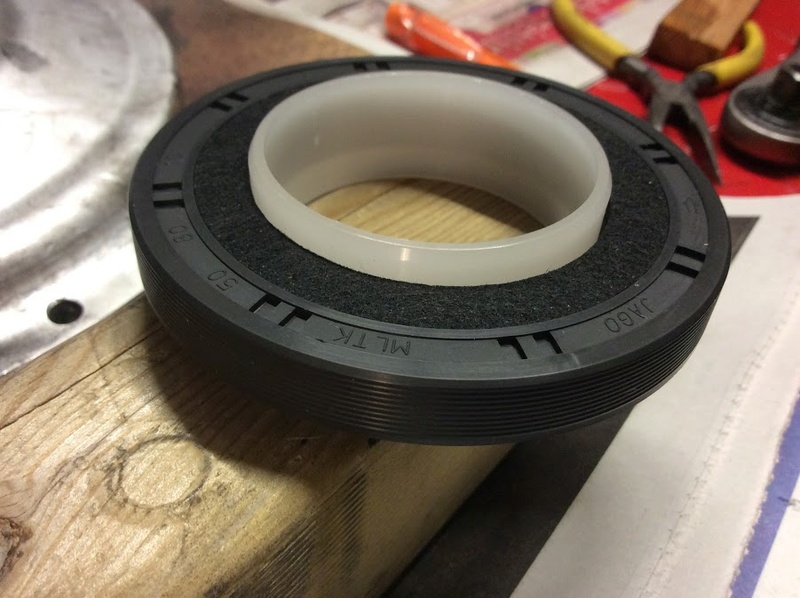TIV wrote: gabriel wrote:Hi
This is just my opinion. Teflon oil seals should be inserted dry. In fact both surfaces should be dry and clean.
The inner teflon lip will be always be a smaller diameter than the shaft so it can form an oil tight seal.
The plastic insert or for example a bill bottle is used to insert the oil seal to prevent the seal from turning inside out.
If you can picture an oil seal with an inner teflon lip which is flexible, as soon as it's passed through a shaft, the inner lip, because it's a smaller diameter will be pushed out, in other words, will be inside out.
The inner lip when properly installed should point inwards facing the oil.
There is a PDF file on the website raser.es which explains in detail teflon oils seals the correct procedure to install them.
When I installed the front oil seal, I adapted a toilet roll which enabled me to install the oil seal without the inner lip been turned inside out.
The inner seal will slowly expand and form an oil tight seal.
It is recommended both surfaces must be dry and clean and to allow approximately four hours for the inner lip to expand and form a seal before starting the engine.
Unfortunately, not all manufacturers include the plastic tool with their seal.
Thanks Gabriel. I think this post summarizes this issue quite well:
Preshape the lip with some 50mm tool (easy)
Lip forward
Install with both surfaces dry
Leave for at least 4 hours before starting the engine
.... and leave 0.5mm protruding from the rear of housing
Hi
I agree.
I think we sometimes overthink situations. There is a lot of detailed information about this topic on the internet.
The tricky part of the installation is ensuring the inner lip of the seal doesn't turn inside out, because as soon as the seal is pushed onto the shaft, that's what is going to happen. The plastic sleeve or equivalent is needed.
I don't understand why some people ignore the experts.....soaking it in oil, throwing the inner plastic sleeve in the bin? ... yes, it might initially work but will soon deteriate..
Experts sometimes make mistakes but why ignore them completely?
The guy at Motorworks who suggests soaking them in oil....oh dear......he should have a read of the website raiser.es before giving dodgy advice to consumers.
The website raiser.es sums it up perfectly........
There is a reason manufacturers include an temporary inner plastic sleeve....and it's not for it to be thrown in the bin!
Soaking them in oil might affect the teflon's ability to expand and form a seal with the shaft....who knows?
I installed my front engine oil seal completely dry, there was some minor and careful manipulation of the teflon lip to ensure it wasn't turned inside out, and waited overnight for the seal to expand and adjust to the shape of the shaft.....
No problems whatsoever since then....
The seal is installed with the plastic sleeve attached and then you carefully withdraw the sleeve. The website raser.es includes diagrams.
Yes, the stub shaft of the clutch carrier might push the inner seal lip to the correct position, it might also damage it....
Oil seals should be installed prior to replacing engine components....
im no expert.....just my opinion...


 Main seal (probably) weeping Sat Oct 08, 2016 9:59 pm
Main seal (probably) weeping Sat Oct 08, 2016 9:59 pm














 )remove the bottle, and insert the clutch hub gently.
)remove the bottle, and insert the clutch hub gently.
 1986 k75, 1985 K100rt,
1986 k75, 1985 K100rt, 








